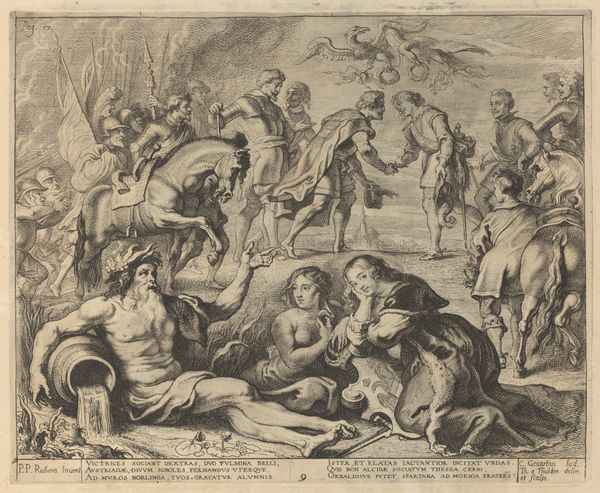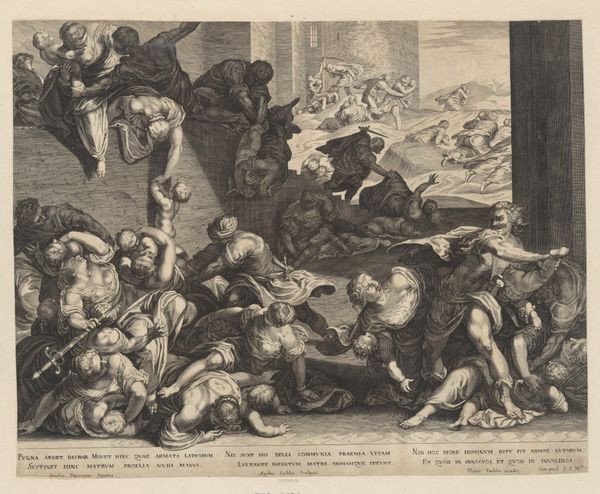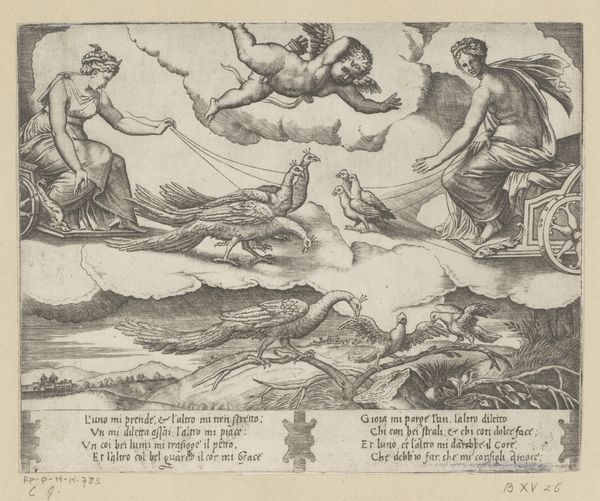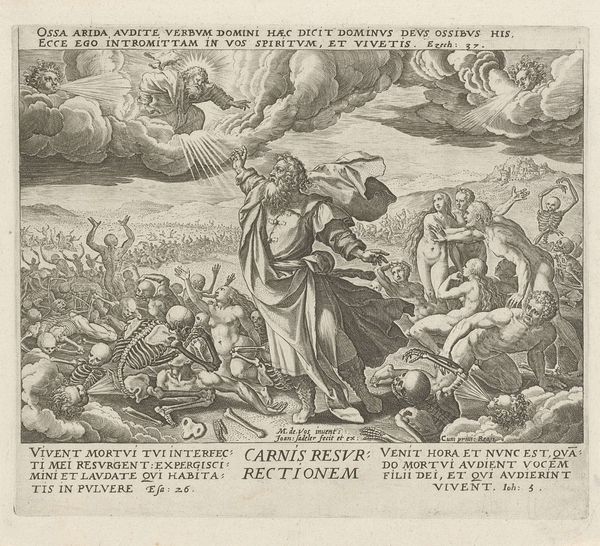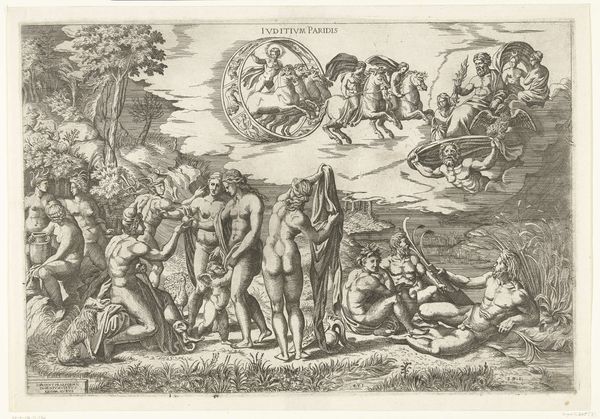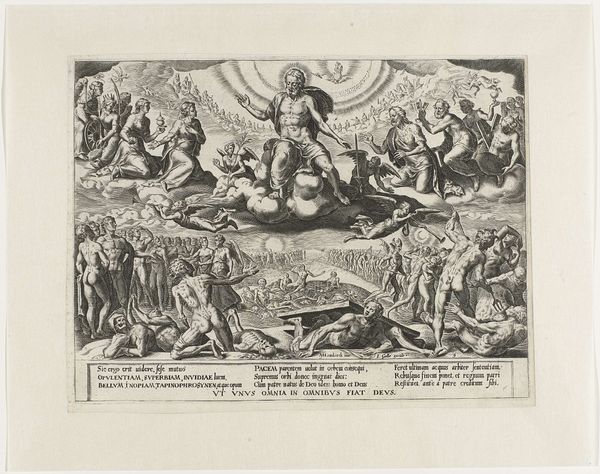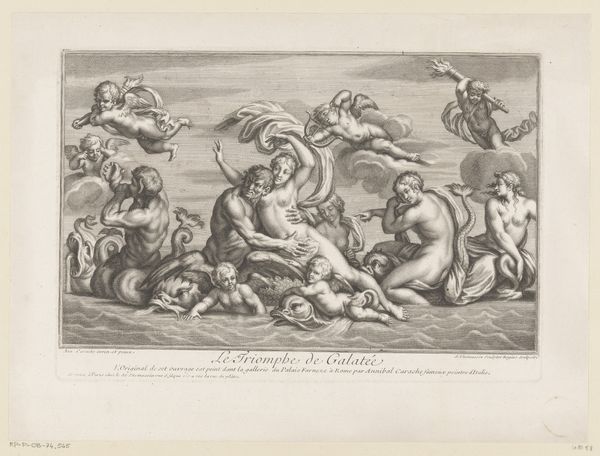
Laatste Oordeel: 'vandaar zal Hij komen oordelen de levenden en de doden' 1579
0:00
0:00
print, engraving
# print
#
old engraving style
#
landscape
#
figuration
#
history-painting
#
northern-renaissance
#
engraving
Dimensions: height 208 mm, width 242 mm
Copyright: Rijks Museum: Open Domain
Curator: As we observe this intricate engraving titled "Laatste Oordeel: 'vandaar zal Hij komen oordelen de levenden en de doden'," created in 1579 by Johann Sadeler I, what’s your immediate impression? Editor: My eye is immediately drawn to the tumultuous energy. There's such a dramatic division between the heavenly figures floating serenely above and the chaotic, almost grotesque figures emerging from the earth below. Curator: Absolutely. Consider the historical context. This work originates from the Northern Renaissance, a period grappling with religious upheaval, notably the Reformation. Sadeler's print vividly visualizes the eschatological anxieties of the era, depicting the Day of Judgment with stark clarity. The "old engraving style" reinforces a sense of historical weight, doesn't it? Editor: Yes, it lends a somber tone, emphasizing a narrative deeply embedded in Christian iconography. Note the descending Christ, bathed in light, acting as both judge and savior. The angels around him are signaling salvation for some while others are condemned and dragged toward demonic figures. The details reinforce Christian beliefs surrounding judgement and eternity. Curator: Indeed. Look at the figures rising from their graves; some reach pleadingly towards the heavens, while others cower in fear. The bodies themselves speak volumes. The contorted postures and expressions of agony depict not just physical suffering but the torment of a guilty conscience, a potent message in a time of intense religious scrutiny and political division. Editor: It’s fascinating how the symbolic weight of the "Last Judgment" motif carries through centuries. This scene touches on fundamental questions about morality, justice, and the afterlife that resonate across cultures and eras, and the lasting effect of sin that has consequences for all. The print, though rooted in its time, becomes a mirror reflecting our ongoing struggle with such ideas. Curator: Precisely. The brilliance lies in its intersectionality, weaving together theological doctrines with the raw human experiences of guilt, hope, and despair. And considering the religious conflict of the time, prints such as these made complex dogma accessible. Editor: Thinking about art in those terms, this image serves as both a reflection of a time in the distant past, and its universal motifs speak across historical, spiritual and cultural chasms, leaving lasting impacts on any soul who views it. Curator: Absolutely. Considering the intricate details of engraving work involved and cultural significance embedded within its visual symbols, Sadeler’s "Last Judgement" encapsulates an extraordinary synthesis of artistic, historical, and emotional weight, still echoing centuries later.
Comments
No comments
Be the first to comment and join the conversation on the ultimate creative platform.



